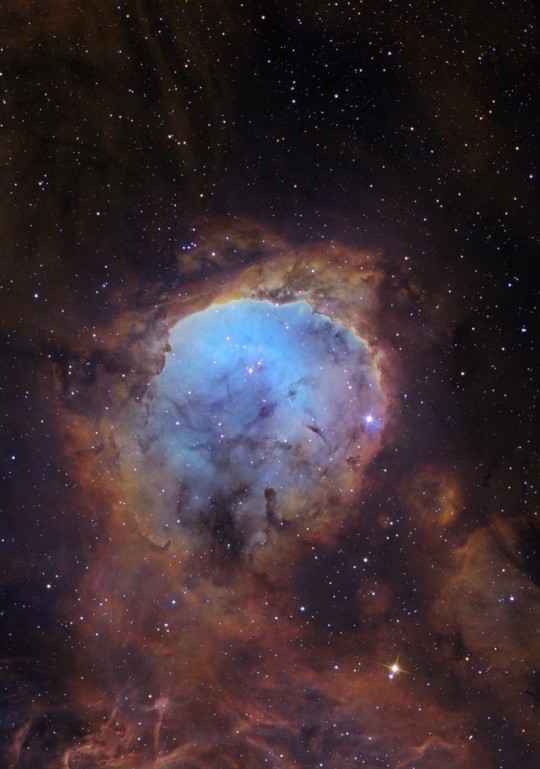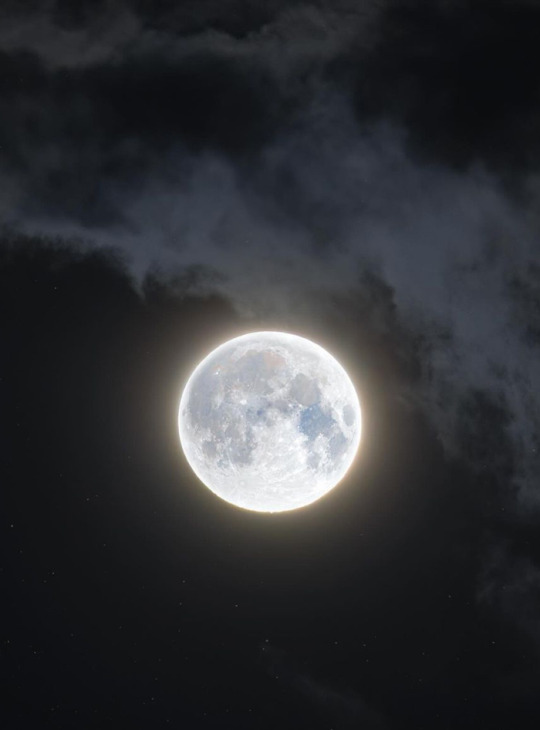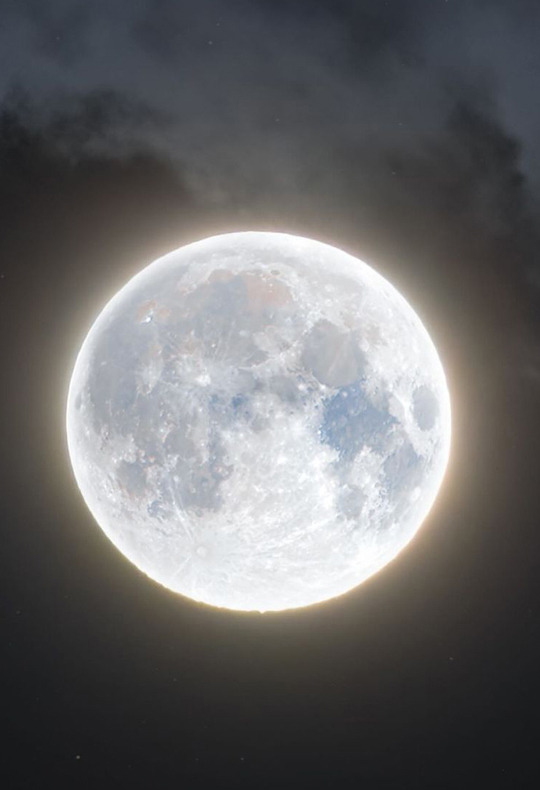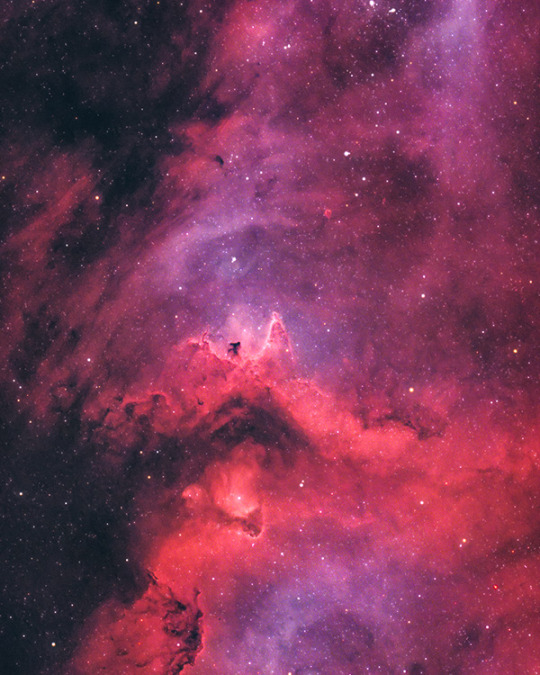Text

Venus (upper left) and the Pleiades (M45, bottom right) on April 12, 2023 // Dawson Fehr
66 notes
·
View notes
Text
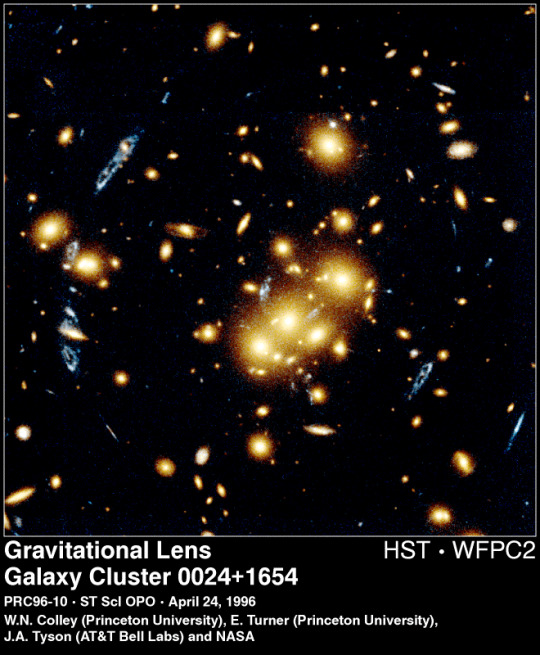
Giant Cluster Bends, Breaks Galaxy Images - April 24th, 1996.
"What are those strange blue objects? Many are images of a single, unusual, beaded, blue, ring-like galaxy which just happens to line-up behind a giant cluster of galaxies. Cluster galaxies here appear yellow and - together with the cluster's dark matter - act as a gravitational lens. A gravitational lens can create several images of background galaxies, analogous to the many points of light one would see while looking through a wine glass at a distant street light. The distinctive shape of this background galaxy - which was probably just forming - has allowed astronomers to deduce that it has separate images at 4, 8, 9 and 10 o'clock, from the center of the cluster. Possibly even the blue smudge just left of the center is yet another image! This spectacular photo from HST was taken in October, 1994. The first cluster lens was found unexpectedly by Roger Lynds (NOAO) and Vahe Petrosian (Stanford) in 1986, while testing a new type of imaging device. Lensed arcs around this cluster, CL0024+1654, were first discovered from the ground by David Koo (UCO Lick) in 1988."
65 notes
·
View notes
Text
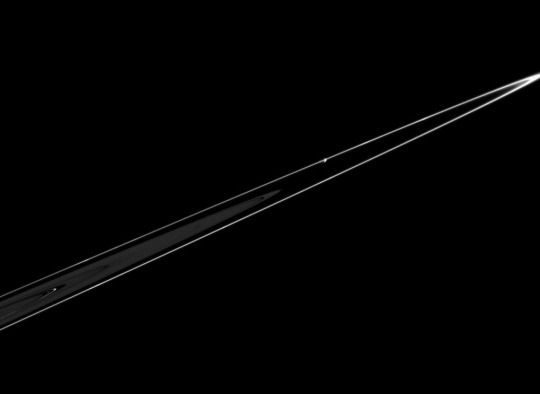
Cassini: Pandora orbiting just beyond the outer edge of Saturn's F ring (February 18, 2005)
91 notes
·
View notes
Text

New SpaceTime out Monday....
SpaceTime 20240422 Series 27 Episode 49
Discovery of the most massive stellar black hole in our galaxy
Astronomers have identified the most massive stellar black hole yet discovered in the Milky Way galaxy.


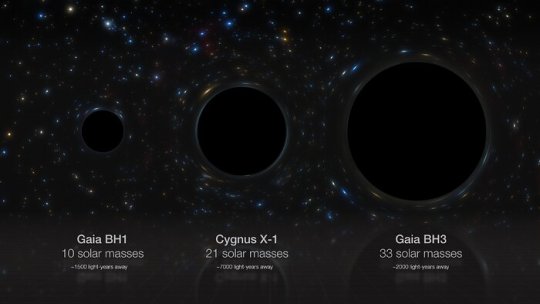

Rewriting the evolution of white dwarf stars
Astronomers have discovered a small population of white dwarf stars that have mysteriously stopped cooling.


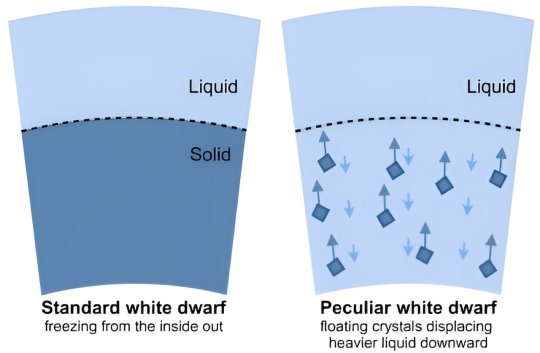
Development of a new bigger Cygnus Cargo ship
Engineers are developing a new updated version of the Cygnus Cargo ship for future supply missions to the International Space Station.
The Science Report
The Bureau of Meteorology has declared the El Niño weather event of 2023-24 has finally ended.
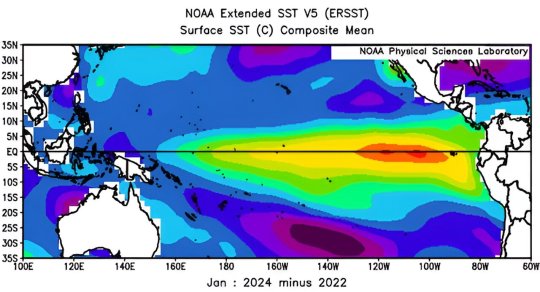

Claims drinking more than a glass of sweetened drinks daily linked to chronic kidney disease.
Scientists discover the remains of what could be the largest marine reptile ever to live.
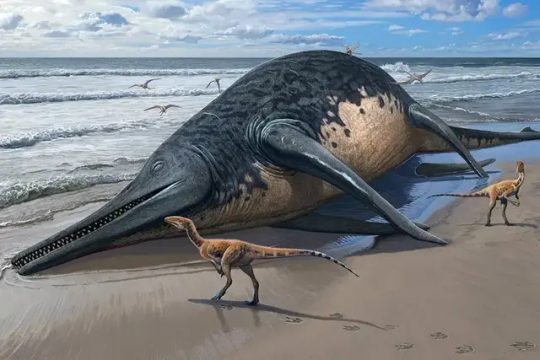
Skeptics guide to Sweden’s paranormal phenomena archive
SpaceTime covers the latest news in astronomy & space sciences.
The show is available every Monday, Wednesday and Friday through Apple Podcasts (itunes), Stitcher, Google Podcast, Pocketcasts, SoundCloud, Bitez.com, YouTube, your favourite podcast download provider, and from www.spacetimewithstuartgary.com
SpaceTime is also broadcast through the National Science Foundation on Science Zone Radio and on both i-heart Radio and Tune-In Radio.
SpaceTime daily news blog: http://spacetimewithstuartgary.tumblr.com/
SpaceTime facebook: www.facebook.com/spacetimewithstuartgary
SpaceTime Instagram @spacetimewithstuartgary
SpaceTime twitter feed @stuartgary
SpaceTime YouTube: @SpaceTimewithStuartGary
SpaceTime -- A brief history
SpaceTime is Australia’s most popular and respected astronomy and space science news program – averaging over two million downloads every year. We’re also number five in the United States. The show reports on the latest stories and discoveries making news in astronomy, space flight, and science. SpaceTime features weekly interviews with leading Australian scientists about their research. The show began life in 1995 as ‘StarStuff’ on the Australian Broadcasting Corporation’s (ABC) NewsRadio network. Award winning investigative reporter Stuart Gary created the program during more than fifteen years as NewsRadio’s evening anchor and Science Editor. Gary’s always loved science. He studied astronomy at university and was invited to undertake a PHD in astrophysics, but instead focused on his career in journalism and radio broadcasting. He worked as an announcer and music DJ in commercial radio, before becoming a journalist and eventually joining ABC News and Current Affairs. Later, Gary became part of the team that set up ABC NewsRadio and was one of its first presenters. When asked to put his science background to use, Gary developed StarStuff which he wrote, produced and hosted, consistently achieving 9 per cent of the national Australian radio audience based on the ABC’s Nielsen ratings survey figures for the five major Australian metro markets: Sydney, Melbourne, Brisbane, Adelaide, and Perth. The StarStuff podcast was published on line by ABC Science -- achieving over 1.3 million downloads annually. However, after some 20 years, the show finally wrapped up in December 2015 following ABC funding cuts, and a redirection of available finances to increase sports and horse racing coverage. Rather than continue with the ABC, Gary resigned so that he could keep the show going independently. StarStuff was rebranded as “SpaceTime”, with the first episode being broadcast in February 2016. Over the years, SpaceTime has grown, more than doubling its former ABC audience numbers and expanding to include new segments such as the Science Report -- which provides a wrap of general science news, weekly skeptical science features, special reports looking at the latest computer and technology news, and Skywatch – which provides a monthly guide to the night skies. The show is published three times weekly (every Monday, Wednesday and Friday) and available from the United States National Science Foundation on Science Zone Radio, and through both i-heart Radio and Tune-In Radio.
15 notes
·
View notes
Text
HOW FAST DOES LIGHT TRAVEL??
Blog#395
Wednesday, April 24th, 2024.
Welcome back,
The speed of light traveling through a vacuum is exactly 299,792,458 meters (983,571,056 feet) per second. That's about 186,282 miles per second — a universal constant known in equations as "c," or light speed.
According to physicist Albert Einstein's theory of special relativity, on which much of modern physics is based, nothing in the universe can travel faster than light.

The theory states that as matter approaches the speed of light, the matter's mass becomes infinite. That means the speed of light functions as a speed limit on the whole universe. The speed of light is so immutable that, according to the U.S. National Institute of Standards and Technology, it is used to define international standard measurements like the meter (and by extension, the mile, the foot and the inch).

Through some crafty equations, it also helps define the kilogram and the temperature unit Kelvin.
But despite the speed of light's reputation as a universal constant, scientists and science fiction writers alike spend time contemplating faster-than-light travel. So far no one's been able to demonstrate a real warp drive, but that hasn't slowed our collective hurtle toward new stories, new inventions and new realms of physics.
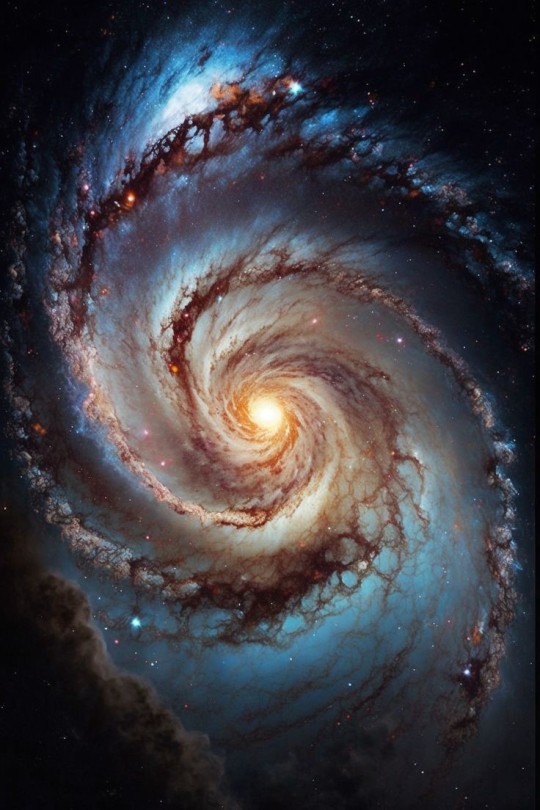
A light-year is the distance that light can travel in one year — about 6 trillion miles (10 trillion kilometers). It's one way that astronomers and physicists measure immense distances across our universe.
Light travels from the moon to our eyes in about 1 second, which means the moon is about 1 light-second away. Sunlight takes about 8 minutes to reach our eyes, so the sun is about 8 light minutes away. Light from Alpha Centauri, which is the nearest star system to our own, requires roughly 4.3 years to get here, so Alpha Centauri is 4.3 light-years away.

"To obtain an idea of the size of a light-year, take the circumference of the Earth (24,900 miles), lay it out in a straight line, multiply the length of the line by 7.5 (the corresponding distance is one light-second), then place 31.6 million similar lines end to end," NASA's Glenn Research Center says on its website. "The resulting distance is almost 6 trillion (6,000,000,000,000) miles!"

Stars and other objects beyond our solar system lie anywhere from a few light-years to a few billion light-years away. And everything astronomers "see" in the distant universe is literally history. When astronomers study objects that are far away, they are seeing light that shows the objects as they existed at the time that light left them.
Originally published on https://www.space.com
COMING UP!!
(Saturday, April 27th, 2024)
"HOW WAS OUR SOLAR SYSTEM CREATED??"
64 notes
·
View notes
Text
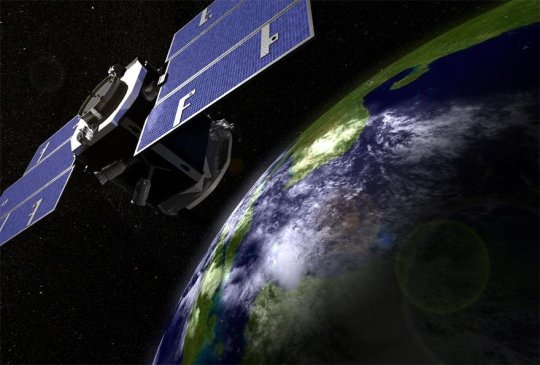
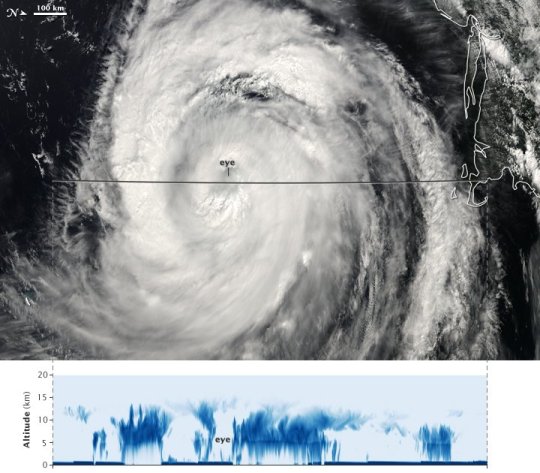
NASA’s CloudSat Ends Mission Peering Into the Heart of Clouds
Over the course of nearly two decades, its powerful radar provided never-before-seen details of clouds and helped advance global weather and climate predictions.
CloudSat, a NASA mission that peered into hurricanes, tallied global snowfall rates, and achieved other weather and climate firsts, has ended its operations. Originally proposed as a 22-month mission, the spacecraft was recently decommissioned after almost 18 years observing the vertical structure and ice/water content of clouds.
As planned, the spacecraft — having reached the end of its lifespan and no longer able to make regular observations — was lowered into an orbit last month that will result in its eventual disintegration in the atmosphere.
When launched in 2006, the mission’s Cloud Profiling Radar was the first-ever 94 GHz wavelength (W-band) radar to fly in space. A thousand times more sensitive than typical ground-based weather radars, it yielded a new vision of clouds — not as flat images on a screen but as 3D slices of atmosphere bristling with ice and rain.
For the first time, scientists could observe clouds and precipitation together, said Graeme Stephens, the mission’s principal investigator at NASA’s Jet Propulsion Laboratory in Southern California. “Without clouds, humans wouldn’t exist, because they provide the freshwater that life as we know it requires,” he said. “We sometimes refer to them as clever little devils because of their confounding properties. Clouds have been an enigma in terms of predicting climate change.”
Clouds have long held many secrets. Before CloudSat, we didn’t know how often clouds produce rain and snow on a global basis. Since its launch, we’ve also come a long way in understanding how clouds are able to cool and heat the atmosphere and surface, as well as how they can cause aircraft icing.
CloudSat data has informed thousands of research publications and continues to help scientists make key discoveries, including how much ice and water clouds contain globally and how, by trapping heat in the atmosphere, clouds accelerate the melting of ice in Greenland and at the poles.
Weathering the Storm
Over the years, CloudSat flew over powerful storm systems with names like Maria, Harvey, and Sandy, peeking beneath their swirling canopies of cirrus clouds. Its Cloud Profiling Radar excelled at penetrating cloud layers to help scientists explore how and why tropical cyclones intensify.
Across the life of CloudSat, several potentially mission-ending issues occurred related to the spacecraft’s battery and to the reaction wheels used to control the satellite’s orientation. The CloudSat team developed unique solutions, including “hibernating” the spacecraft during nondaylight portions of each orbit to conserve power, and orienting it with fewer reaction wheels. Their solutions allowed operations to continue until the Cloud Profiling Radar was permanently turned off in December 2023.
“It’s part of who we are as a NASA family that we have dedicated and talented teams that can do things that have never before been done,” said Deborah Vane, CloudSat’s project manager at JPL. “We recovered from these anomalies with techniques that no one has ever used before.”
Sister Satellites
CloudSat was launched on April 28, 2006, in tandem with a lidar-carrying satellite called CALIPSO (short for the Cloud-Aerosol Lidar and Infrared Pathfinder Satellite Observation). The two spacecraft joined an international constellation of weather- and climate-tracking satellites in Earth orbit.
Radar and lidar are considered “active” sensors because they direct beams of energy at Earth — radio waves in the case of CloudSat and laser light in the case of CALIPSO — and measure how the beams reflect off the clouds and fine particles (aerosols) in the atmosphere. Other orbiting science instruments use “passive” sensors that measure reflected sunlight or radiation emitted from Earth or clouds.
Orbiting less than a minute apart, CloudSat and CALIPSO circled the globe in Sun-synchronous orbits from the North to the South Pole, crossing the equator in the early afternoon and after midnight every day. Their overlapping radar-lidar footprint cut through the vertical structure of the atmosphere to study thin and thick clouds, as well as the layers of airborne particles such as dust, sea salt, ash, and soot that can influence cloud formation.
The influence of aerosols on clouds remains a key question for global warming projections. To explore this and other questions, the recently launched PACE satellite and future missions in NASA’s Earth System Observatory will build upon CloudSat’s and CALIPSO’s legacies for a new generation.
“Earth in 2030 will be different than Earth in 2000,” Stephens said. “The world has changed, and the climate has changed. Continuing these measurements will give us new insights into changing weather patterns.”
More About the Missions
The CloudSat Project is managed for NASA by JPL. JPL developed the Cloud Profiling Radar instrument with important hardware contributions from the Canadian Space Agency. Colorado State University provides science data processing and distribution. BAE Systems of Broomfield, Colorado, designed and built the spacecraft. The U.S. Space Force and U.S. Department of Energy contributed resources. U.S. and international universities and research centers support the mission science team. Caltech in Pasadena, California, manages JPL for NASA.
CALIPSO, which was a joint mission between NASA and the French space agency, CNES (Centre National d’Études Spatiales), ended its mission in August 2023.
TOP IMAGE....An artist’s concept shows NASA’s CloudSat spacecraft in orbit above Earth. Launched in 2006, it provided the first global survey of cloud properties before being decommissioned in March 2024 at the end of its lifespan. Credit: NASA/JPL
LOWER IMAGE....NASA’s CloudSat passed over Hurricane Bill near the U.S. East Coast in August 2009, capturing data from the Category 4 storm’s eye. This pair of images shows a view from the agency’s Aqua satellite (top) along with the vertical structure of the clouds measured by CloudSat’s radar (bottom). Credit: Jesse Allen, NASA Earth Observatory
12 notes
·
View notes
Text

The Northern Jewel Box (NGC 6231, bottom) // Dawson Fehr
Also in this image is the Prawn Nebula (IC 4628), and the star clusters NGC 6281 (upper left), NGC 6268 (above left of Prawn), NGC 6242 (above right of Prawn), and NGC 6192 (bottom right)
75 notes
·
View notes
Photo

2024 April 24
Dragon’s Egg Bipolar Emission Nebula
Image Credit & Copyright: Rowan Prangley
Explanation: How did a star form this beautiful nebula? In the middle of emission nebula NGC 6164 is an unusually massive star. The central star has been compared to an oyster’s pearl and an egg protected by the mythical sky dragons of Ara. The star, visible in the center of the featured image and catalogued as HD 148937, is so hot that the ultraviolet light it emits heats up gas that surrounds it. That gas was likely thrown off from the star previously, possibly the result of a gravitational interaction with a looping stellar companion. Expelled material might have been channeled by the magnetic field of the massive star, in all creating the symmetric shape of the bipolar nebula. NGC 6164 spans about four light years and is located about 3,600 light years away toward the southern constellation Norma.
∞ Source: apod.nasa.gov/apod/ap240424.html
106 notes
·
View notes
Text

"STS-31 Discovery (OV-103), lifts off from Kennedy Space Center (KSC) Launch Complex (LC) 39 Pad B. Discovery, carrying a five-member crew and the Hubble Space Telescope, lifted off at 8:34 a.m. EDT, April 24. STS-31 crew members are: Commander Loren Shriver; Pilot Charles Bolden; and Mission Specialists Steven Hawley, Bruce McCandless II, and Kathryn Sullivan.
In the foreground, STS-35 Columbia (OV-102), is visible on launch pad 39A. Columbia, with its Astro-1 observatory, was scheduled for launch in May.
This event marked the first time since January 1986 that there was an orbiter on each pad. LC 39 pads are separated by 1.6 miles."
Date: April 24, 1990
NASA ID: SPD-GRIN-GPN-2000-00 0684, S90-44867
40 notes
·
View notes
Text
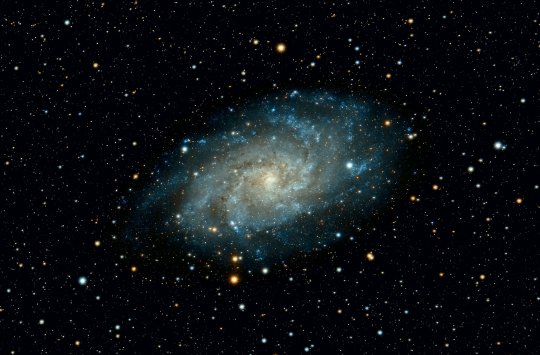
New JWST observations reveal black holes rapidly shut off star formation in massive galaxies
New research published in Nature showcases new observations from the James Webb Space Telescope (JWST) that suggest black holes rapidly shut off star-formation in massive galaxies by explosively removing large amounts of gas.
The international team found that more than 90% of the galactic wind is made of neutral gas, and therefore was virtually invisible in previous studies. This work is the first direct confirmation that supermassive black holes are capable of shutting down galaxies.
The difference between this new study and previous works is found in the type of gas observed: until now it was only possible to detect ionized gas, which is warm; while the JWST was able to also detect neutral gas, which is cold.
Dr. Rebecca Davies from Swinburne University of Technology's Center for Astrophysics and Supercomputing led the Australian team behind this discovery and helped to find the powerful black-hole driven outflow in a distant massive galaxy with a very low level of star formation.
"The outflow is removing gas faster than gas is being converted into stars, indicating that the outflow is likely to have a very significant impact on the evolution of the galaxy. Our findings provide new evidence to indicate that black-hole driven outflows are able to rapidly shut off or 'quench' star formation in massive galaxies."
When star formation is quenched, it means that a galaxy has stopped forming stars. It represents the transformation between a galaxy that is actively forming stars, allowing it to grow and change, and a galaxy that is "dead" and static. Quenching is therefore a fundamental process in the life cycle of galaxies. However, astronomers still don't understand in detail what leads galaxies to stop forming stars.
Alongside internationally recognized researchers, particularly lead author Sirio Belli from the University of Bologna, Dr. Davies studied a galaxy that is located at an enormous distance from Earth whose light took more than 10 billion years to reach us.
Active galactic nuclei (AGN)—supermassive black holes consuming large amounts of gas—can drive outflows from galaxies. The most powerful AGN drive very massive outflows that could possibly remove all of the gas from their host galaxies in a relatively "short" amount of time and cause star-formation to cease.
"The JWST made it possible for us to observe the cooler, neutral gas phase of normal AGN-driven outflows in distant galaxies. In the galaxy studied, we found that the outflow rate in the neutral phase was ~100 times larger than the outflow rate in the ionized phase, therefore revealing a lot of outflowing mass that was previously invisible."
Dr. Davies says the JWST can be used to detect a much larger fraction of the outflows, whereas previous ionized gas observations were only able to detect about 1%.
"Before the JWST, we were only scraping the tip of the iceberg when it comes to the outflowing mass."
The team is excited for what they might discover as they analyze more galaxies in the future.
9 notes
·
View notes
